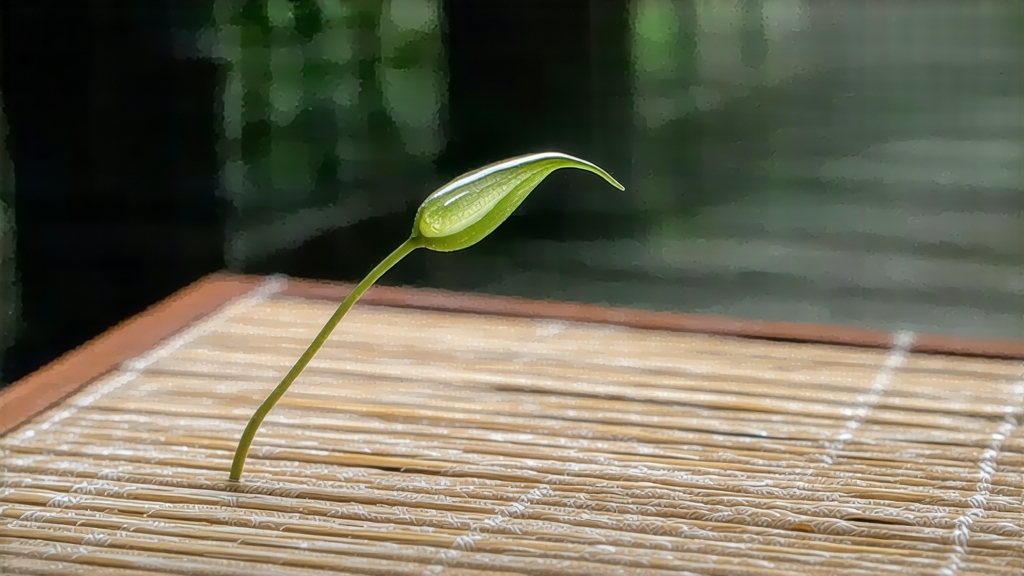
If green tea is spring’s first cry and pu-erh an autumn meditation, then Fuding Silver Needle (Bai Hao Yin Zhen) is the hush of a moonlit night distilled into liquor. Revered as the aristocrat of Chinese white tea, it is picked only between mid-March and early April, when the air in northern Fujian still carries the chill of winter and the tea bushes awaken under a silver-white down. Each pluck is a minimalist gesture—only the unopened bud, plump with winter-stored sugars and cloaked in tiny hairs that catch light like frost. Nothing is added, yet everything is preserved.
History whispers rather than shouts here. Song-dynasty court records mention “white tablets of tribute tea” pressed into cakes and sent northward on horseback, but the loose-needle style we recognize today emerged only in the late 1790s, when tea merchants near Taimu Mountain began to sun-dry buds for the Cantonese export market. By 1891 Silver Needle won gold at the London International Tea Fair; Western tasters, confused by its lack of green coloration, christened it “white tea,” a name that stuck and eventually christened the entire category.
The micro-region matters as much as the cultivar. Authentic Silver Needle comes from either Fuding Da Bai or the even rarer Fuding Da Hao bush, both of which develop extraordinarily large buds thanks to the granite soils and maritime fogs of Fujian’s northeast coast. Twenty kilometers inland the same plants produce leafier, less luminous material; connoisseurs can taste the difference in the length of the finish. Within Fuding county the villages of Guan Yang, Pan Xi, and Dian Tou enjoy microclimates cooled by Taimu’s cloud forest, yielding buds that are longer, silkier, and richer in amino acids. These hamlets still wake to the sound of bamboo drums: pickers tap the branches gently to dislodge only the most perfect shoots, dropping them into wicker baskets lined with fresh banana leaves to prevent bruising.
Craft begins the moment the bud leaves the branch. Spread in single layers on water-woven bamboo trays, the buds undergo a forty-eight-hour “quiet withering” that is closer to meditation than manufacture. No heat, no rolling—only the slow surrender of moisture to sun and breeze. Masters read the weather like scripture: if the morning carries too much humidity they slide the trays into shaded corridors; if the afternoon sun grows fierce they cover the buds with gauze, turning them every twenty minutes to ensure even oxidation. At dusk the trays are stacked inside airy lofts where cool mountain air continues the work. By dawn the buds have lost seventy percent of their weight, curling imperceptibly into slender needles the color of weathered ivory. A final thirty-minute bake at 40 °C sets the aromatics without caramelization, leaving the enzyme profile intact for decades of graceful aging.
Unlike green tea, Silver Needle is not meant to be consumed fresh from the dryer. Traditionally it rests for six weeks so residual moisture equalizes; during this time hay-like notes recede and a subtle honeyed note emerges. Aficionados cellar it in clay jars lined with unbleached paper, allowing micro-oxygenation to deepen complexity. A well-stored cake from 2013 can fetch higher prices than newly pressed sheng pu-erh, its liquor turning from pale citrine to deep amber while maintaining a cool, metallic sparkle on the tongue.
Brewing Silver Needle is an exercise in restraint. Begin with still mineral water low in bicarbonates; high alkalinity flattens the delicate lactones responsible for white tea’s “milky” impression. Pre-warm a thin-walled gaiwan or tall glass; thick porcelain steals heat and mutes fragrance. Use three grams—roughly two heaping teaspoons—for every 120 ml, then shock the buds with 85 °C water poured from a height of ten centimeters. The first infusion should last no longer than forty seconds; watch the needles sway upright like miniature kelp forests before sinking. Decant fully to prevent stewing; the second infusion, at fifty seconds, often delivers the most aromatic lift, reminiscent of fresh melon rind and crushed fennel. By the fifth steep, lengthen time to two minutes and notice how sweetness migrates from tip to throat, leaving a cool sensation dentists call “electric mint.” A single portion can yield eight